Today, School Chaplain Reverend Creed offers the community a reflection during this Advent season.

This week our Junior School Assembly inducted our new Student Council members for Semester One. It was a pleasure to see many families join us for this special occasion in the Junior School Hall. Thank you to our Deputy Principal Davina McClure for handing out badges to the following students:
Year 1 – Alicia H
Year 2 – Emilia Z
Year 3 – Angela Z
Year 4 – Ajab Z
Year 5G – Olivia H
Year 5S – Olivia V
Social Service Leaders: Lucy N, Annabelle T & Sara Z
The theme of the assembly was Commitment which is one of our five important CGGS School Values. Mrs McClure defined Commitment as the ability to use a strong mind to set a goal and work hard to deliver it. Our Student Council and Year 6 school leaders can remember these key words when performing their leadership roles during the year. With the support from our Year 3 Class Teacher Liz Warren, we look forward to Student Council undertaking various service-learning projects in the future.

Recently, Ormiston with the help from the Foundation Office and Parent’s & Friends Association (PFA) organised a wonderful Twilight Picnic event in the grounds of the Junior School for all Early Learning to Year 6 families. It was wonderful to see so many families across all year levels spend time together, getting to know new families, reconnecting with current families and getting to know our staff here at Ormiston. Building these connections and fostering a close school community is something that is highly valued at CGGS, with many events hosted throughout the school year I encourage all families to attend.
I would like to thank Kate Daffy and the team from the Foundation Office and PFA for their organisation in contributing to a very successful Twilight Picnic. The face painting and roving magician were highlights for our students and families, and the warmer weather made for a lovely evening. I look forward to hearing our Parent Class Representatives organising functions during the year so families from each year level can catch up and spend time together as a close community.
Paul Donohue
Head of Junior School
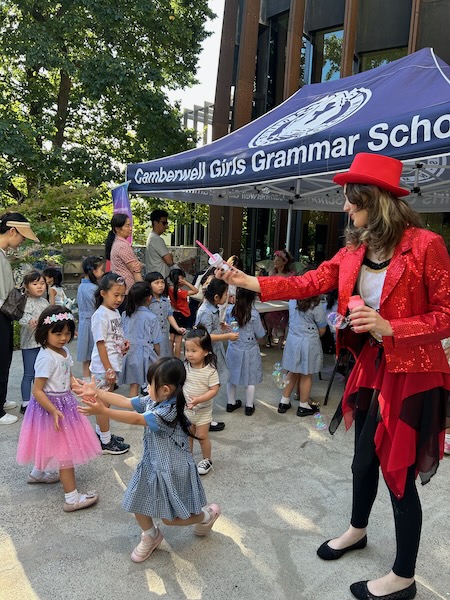

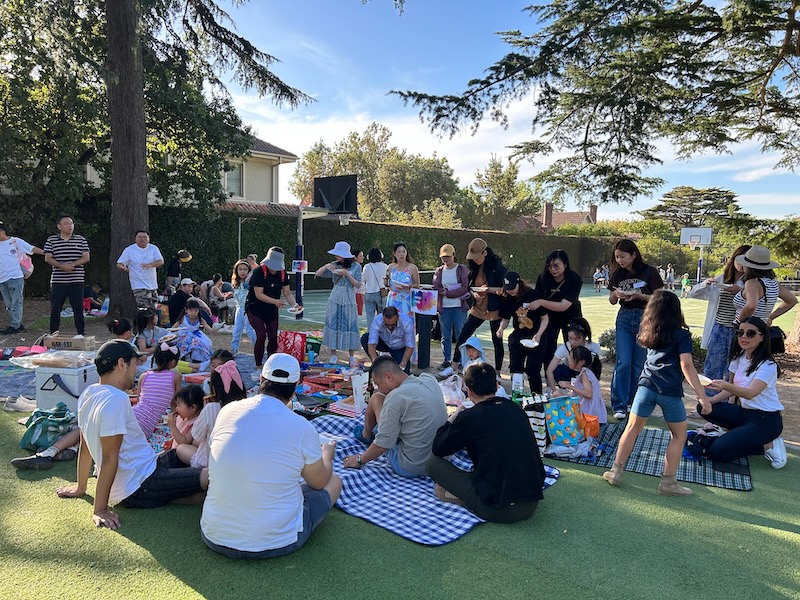


Above Ground and Below Ground
Over the past 5 weeks, the Early Learning 4 Part-Time students have been exploring the living world of plants. A provocation provided by a tiny seed has prompted children to delve deep into an inquiry about botany:
Plant Anatomy
During one of our group times, children engaged in labelling the anatomy of a sunflower:
Ralph: “[It has] yellow petals but they’re dead because they’re all dried up that turns them brown.”
Viaana: “That bit is black and brown… that’s the seeds.”
Amber: “Curly roots.”
Holly: “[The flower head] is sticky because that’s where the pollen lives.”
Margot: “[A plant has] stem, stalk and leaves.”
Jennifer: “I’ve got blue lines, and the plant has white lines”. Making a comparison between human veins to a plant veins.

Plant Categorisation
As part of their investigation, children forged outside collecting natural materials found in the garden before identifying and categorising the different plant parts found.
Above Ground and Below Ground
From above to below ground, children explored the impact of sun and water on the germination process. “That’s when the seeds begin to grow”explained Margot . On close examination, Viaana noticed the direction of the root, stating that “it grows down in the ground, so it doesn’t fall over when it’s windy”. Just as humans have mouths to eat, plants use their roots to gain nutrients and minerals from their surroundings, Margot continued by summarizing that “water travels to the stem, up the veins and makes the plants grow, and the sun goes on the leaves”. As an extension of their learning, children have been invited to create their own ‘above and below’ drawings, focusing on lines, shapes and forms to represent the water and growth cycle of a plant.

Labels and Planting
As a form of consolidation, engaged in the tangible experience of planting their own broad bean seed. Before commencing, they were invited to create a label using drawing and writing. As outlined by Baroutsis et al. (2019), drawings can be viewed as a form of communication – as they are interactive visual expressions of ideas and a mode of making meaning. The labels displayed on this page provide a visual mode in which children ‘show’ their learnings, as well as ‘tell’ their experiences through a powerful medium that overcomes any linguistic limitations. Using both verbal and visual forms of communication supports children to use intentionality to make marks, and colour and provide insight into how they perceive and participate in learning.
This process included children placing soil into a pot, digging a hole, planting the broad bean seed, and watering their seed. By using their sense of touch to undergo this process children develop a tangible understanding of the natural world, which adds new perspective. By spotting living creatures such as centipedes, worms and snails children begin to make connections to the interdependence of living things within the natural environment.

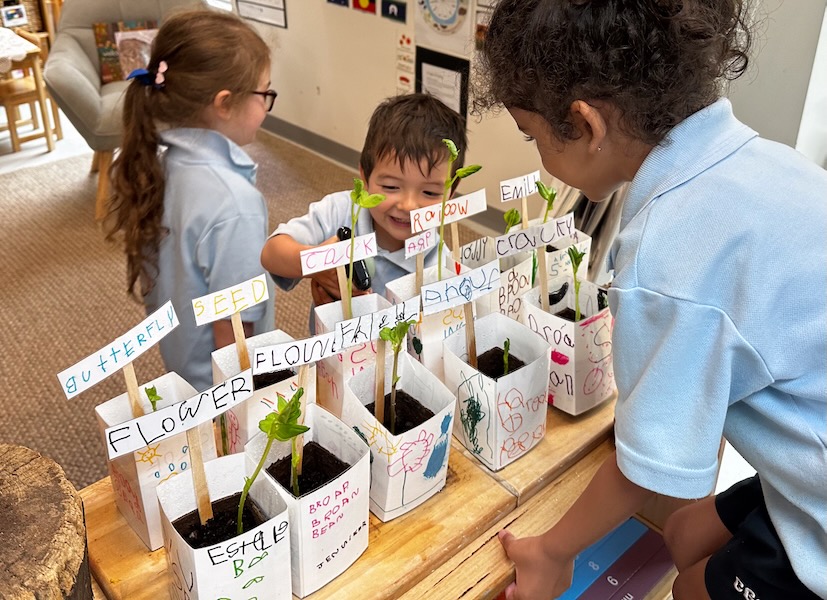

Perfumes and Potions
As reflective thinkers, the children are continuously encouraged to recall, connect, and extend the learning that had been uncovered from the beginning of the inquiry. A comment made by Ralph, “when you smell flowers, it can smell beautiful” prompted the children to begin using their sense of smell to investigate plants in the outdoor space.
It’s important to remember that children learn by gathering information about the world around them through their senses. Within the classroom, a sensory smell experience has been intentionally set, to invite children to use their nose and eyes to explore plant concepts in a tactile way. In doing so, children understand the relationship between seeing and knowing, allowing them to understand the full identity of an object, in this case, a plant. The EL4 children have immensely enjoyed selecting petals and leaves, to create their concoction and potion, before grinding the leaves and adding water, all the while using their eyes and nose to scent pleasant, unpleasant, and interesting smells.


As you can imagine, the inquiry has continued to flourish, and we look forward to sharing where our inquiry leads us next in future editions of CamNews.
Esther Wong
Early Learning 4 Teacher
As part of learning about our identity, the children recently shared stories and photographs about their families and created family portraits. Through dialogue, photographs and drawing they gained an understanding and insight into what family means to different children, family interests, and the different and similar ways we can ‘be’ with our family.
Family means that we all live together. Isabelle
Family means kindness. It means we are friends with each other, and we play together and sit with each other and read books. Roma
Family means you look after each other and love each other. Giselle
To further explore identity, the children were provided with time and opportunity to express themselves through self-portraits. In the classroom, individual photographs and mirrors were used as provocations, and spaces were curated for the children to express their thinking and observations about themselves through drawing.
As researchers and curious learners, the children used mirrors to observe their facial features. They were encouraged to notice the colour of their eyes, the shape of their nose and lips, the position of their teeth, the tone of their skin, and the colour and type of hair – straight, wavy, or curly.
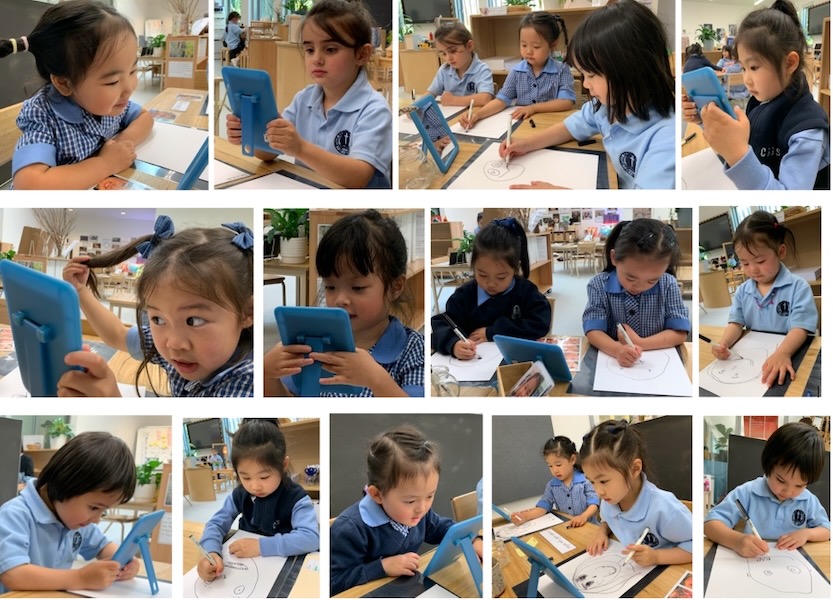
As reflective thinkers, we engaged in dialogue and the children had an opportunity to share their observations about their unique characteristics, and physical similarities and differences.
My eyes are brown. My hair is black and straight. Veronica
I drew my cheeks and my beautiful hair – it’s shiny. My two eyes are round and there’s white and a little bit of shiny in the middle of my black eyes. Irena
I can see my eyes. They’re black. I can see my nose. My cheeks too. I can see my braid. My mum did my braid in the car. Alyssa
My eyes are brown. My hair is brown too. My hair is curly. Roma
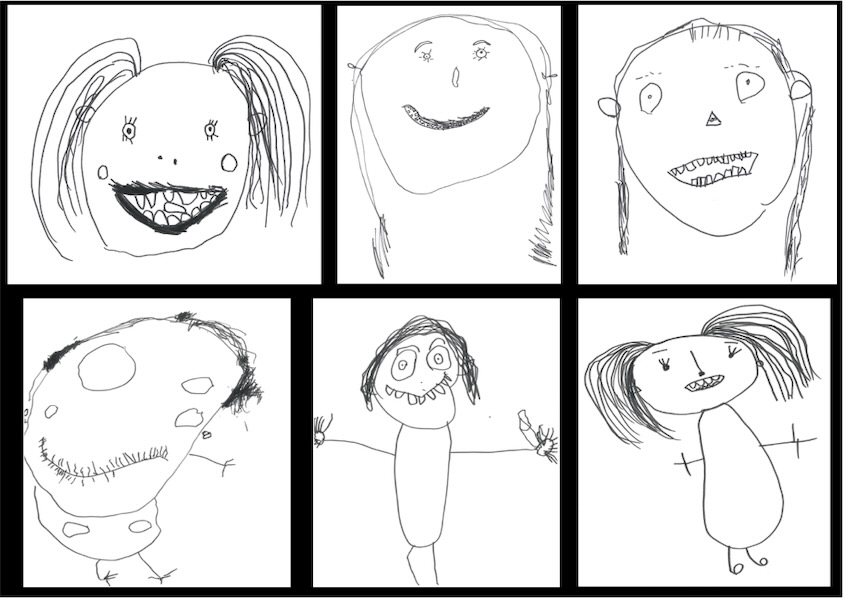
Developing a positive view of oneself is fundamental to every child’s wellbeing, and their ability to learn and engage effectively with their world. A critical part of children developing their identity comes from having an understanding of both themselves, and the people around them. Families and teachers play a significant role in empowering children to embrace their individuality and supporting them to form positive views of themselves, as well as contributing to their sense of belonging.
Angela Follacchio
Early Learning 4 Teacher
Welcome Back to another year of successful music making here at Ormiston.
In week 2 of Term 1, the sounds of music filled the air with the co-curricular music programs recommencing for a new year of marvellous music making. The model of traditional instrumental ensembles provides for the students a meaningful and enjoyable experience of putting into practice the theory and notation of what they learn in the classroom. Music and the performing arts are an important part of a well-rounded education. Here at CGGS, our Junior School ensembles are experiencing record numbers in participation and growth in standard, as our students explore creative and social opportunities to play and sing with like-minded peers.
In preparation for future performances, such as our Instrumental and Choral Concert in June, the students rehearse both independently at home and collaboratively as an ensemble in weekly rehearsals.
Thanks to the success of our classroom music lessons and our string, choir and band programs offered here at Ormiston; our students continue to develop these special skillsets and be further challenged with important life lessons in areas such as responsibility, time management, leadership, improvisation, and memory; helping our budding musicians further develop intellectually, emotionally, and socially. Being part of an ensemble is so much more than just getting together with other musicians and playing a well-practiced piece.
Some of the key benefits to being involved in a music ensemble are:
Our Junior School Ensembles for 2024 are:
Chamber Strings– Years 4-6
Junior Strings– Years 1-4
Sinfonia –Years 3-6
Vocal Express –Years 5-6
Woodwind Ensemble –Years 3-6
Brass Ensemble – Year 6
Plus various Chamber ensembles offered to students in Years 4-6.
To join an ensemble, students need to be undertaking private lessons, and with some ensembles a minimum of 1 year’s private tuition is required to join.
Please contact our Music department on music@cggs.vic.edu.au, if you have any questions regarding ensembles for 2024.
Nichole Adams
Junior School Music Teacher



The Foundation students have been eagerly learning about letters and sounds since the beginning of the year. Following the Little Learners Love Literacy program we have strategically introduced the letters m, s, f, a, p and t. The students have been concentrating on letter formation, craft activities to develop their fine motor skills, sound production and since learning about the vowel letter a, they have begun blending the sounds they know to read words. They are doing a wonderful job with their early literacy skills and are rapidly becoming readers!
Student comments:
“I like the letter a because it is in my name”. Sofia
“We love the characters and we especially like the letters that are in our names and our family members’ names”. Foundation R & S
“I liked making the flamingo because it is pink”. Mia
“I like a because it is a vowel letter and we need them to make real words”. Georgia
“I like Peter the Penguin best because my brother and I both love penguins”. Charlotte
“We like writing the letters on the whiteboards”. Scarlett O
Mikaela Stanaway and Selena Reedman
Foundation Classroom Teachers




On Thursday 29th February a team of 22 students attended the North Balwyn District Swimming Carnival. This is always a much-anticipated event that CGGS looks forward to every year, bringing together students and allowing them to showcase their swimming skills, sportsmanship and team spirit.
The team performed incredibly well on the day with many students coming home with personal best times and ribbons for 3rd, 2nd and 1st place. CGGS also held on to the Girls School Cup, defeating Fintona again this year at the carnival. We had a total of 10 students move on to compete at the Boroondara Division Swimming Carnival.
The Boroondara Division carnival was held on Friday 1st March, the day after the District competition. The standard of competition was extremely high and our students should be proud of the results they achieved. We had our best Division event ever with 5 students moving on to compete at the Easter Metropolitan Regional Swimming Championships next week on Friday 22nd March. We wish the following students all the very best for the upcoming competition. I am sure the hard work and practise will be shown and they will represent CGGS with pride.
Ivy X : 50m Freestyle & 50m Butterfly
Alessandra R: 50m Butterfly
Claire Z: 50m Backstroke & 50m Butterfly
Girls Medley Relay: Alessandra R, Cathy G, Faye L, Claire Z.
Kim James
Junior School PE Teacher
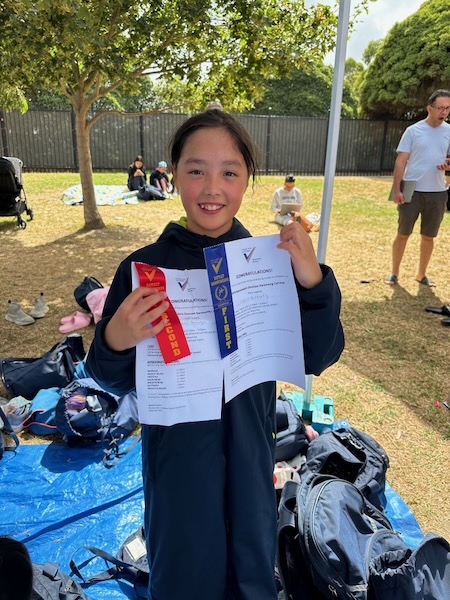




In Year 2, we have been learning about how to be safe and healthy. The last few weeks have focused on learning about our bodies. We have used STEAM to further enhance the students learning to have hands-on activities that consolidates their thinking and understanding of how their bodies work.
In Week 4, Year 2 students ventured over to a Senior School laboratory to learn about muscles and ligaments in our bodies. Students learnt about how a human arm is similar to a chicken wing and how muscles and ligaments work together to move. Students saw what would happen when certain muscles and ligaments were triggered and what would happen when parts of the wing would move.
In Week 6, students again visited a Senior School laboratory to demonstrate the digestive process. Our learning has focused on understanding the parts and process involved in digesting food. Students used banana, biscuits and juice to see what it would look like in the mouth, stomach, intestines and what is left to come out. Safe to say that students were getting their hands dirty with the end process… ewww! An eye-opening activity and one the students will remember for the wrong reasons.
Peter Sartori
Year 2 Classroom Teacher





On Monday 20 February, Year 4 welcomed the Mayor of Boroondara, Cr Lisa Hollingsworth, to the Junior School. Our Inquiry focus this term is based on the question ‘What is a responsible citizen?’ and discovering the significant role local governments play in our lives. The visit with Mayor Hollingsworth greatly enhanced the students understanding of how local councillors are elected, the responsibilities they have and the services that the local council provides to communities. During the visit from Mayor Hollingsworth, the students were given the opportunity to take part in a mock council meeting. Students were given a range of roles including councillors, community members and the general public. As part of the role-play, the council was presented with the decision as to whether to put a slippery dip or swings in one of the local parks. Students were given the opportunity to present arguments as community members as to their individual preference and provide reasons as to why their position was the better choice. The 10 Councillors then voted and the majority nominated for the slippery dip. Through this experience, the students were able to put into action their persuasive skills and gain insight as to how decisions are made in a fair and democratic way. We also learnt so much about Mayor Hollingsworth and her path to becoming the Mayor of Boroondara. It was a highly engaging and informative session for each of the Year 4 students.
Anjali de Quadros
Year 4 Classroom Teacher
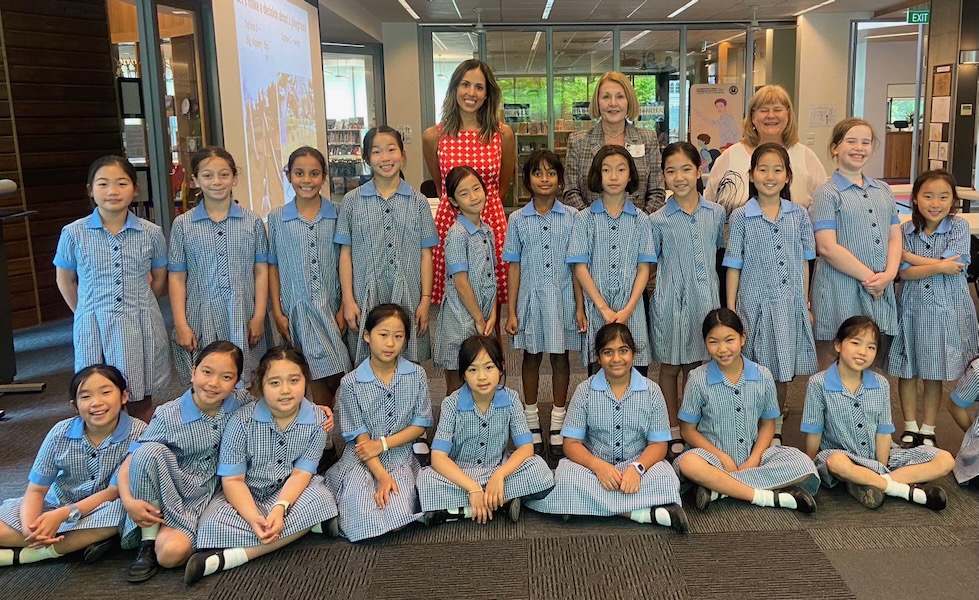




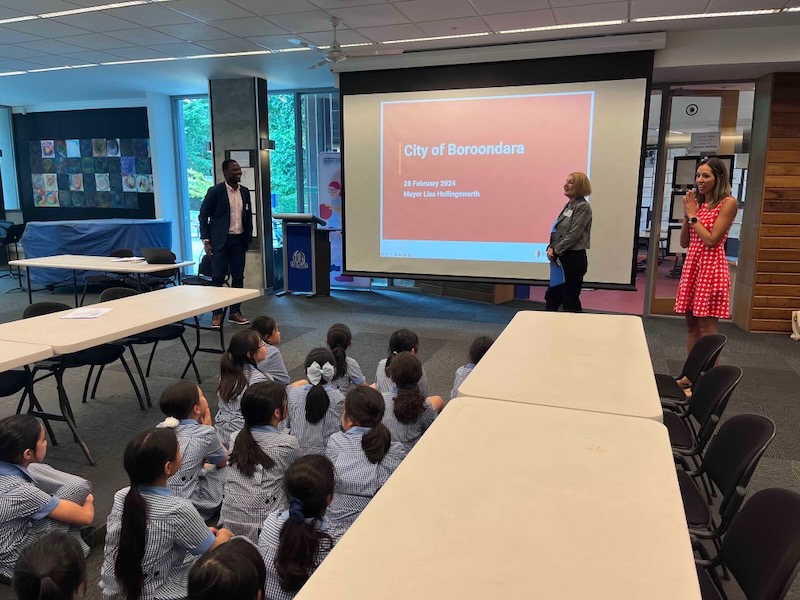
Today, School Chaplain Reverend Creed offers the community a reflection during this Advent season.
For our Year 6 students, their last few weeks at Junior School have been filled with celebrations!
The year has ended on a high note with the biggest event on the School’s calendar, Christmas at Camberwell, proving to be a huge success.

